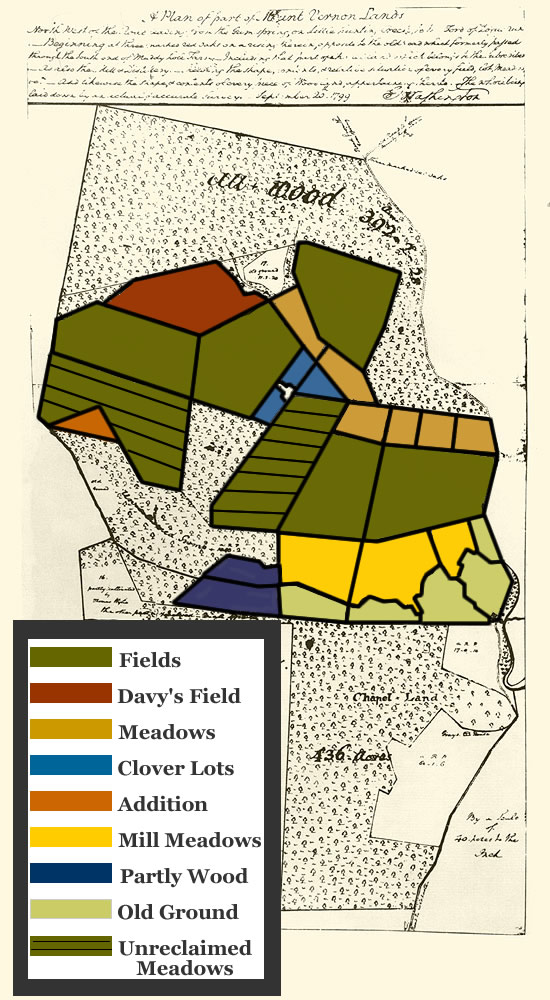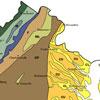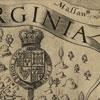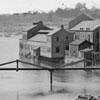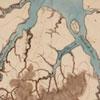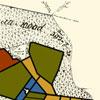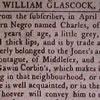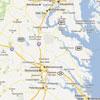In a letter to the Marquis de Lafayette written in 1788, George Washington hoped the U.S. would “some day or another, … become a storehouse and granary for the world.”[1] This map, produced in 1799 and overlaid with a descriptive key, illustrates the diversity of crops Washington passed on to his heirs after his death.
European colonists faced challenges from native and non-native species alike. Tobacco, a native species, provided an initial source of revenue for the Virginia Company, but required a great deal of time and labor to cultivate. It also wore out the soil in just a few years, requiring new sources of land to remain productive. As early as the 1660s, Governor Berkeley tried to encourage planters to diversify away from tobacco. By the end of the 18th century, George Washington was quite proud of his extensive farms and had all but stopped cultivating tobacco. Virginia farmers today continue to grow a wide variety of crops from wheat and corn to tomatoes and soybeans.
Quite a few of the plants and animals living in the United States today are not actually native to North America. These species have been imported – intentionally and unintentionally – over the past few centuries of European exploration and settlement. Some examples of intentionally introduced plants and animals that became important crops in early Virginia are wheat, cows, and hogs. Other species were introduced unknowingly. One of the earliest of these was the brown rat, which crossed the Atlantic on the first European explorers’ ships.
Many of these introduced species had unexpected, and sometimes detrimental, effects on native species. Cows and hogs, for example, ranged over Virginia forests and fields and were often blamed for decreasing native deer populations – a serious problem for Virginia Indians. When we think of the environment we often forget about disease, but viruses and bacteria survive in much the same way other species do, and European diseases, such as smallpox, had a deadly effect on native populations.
1. George Washington to Marquis de Lafayette, “George Washington to Lafayette,” June 18, 1788, Papers of George Washington.
Lionel Pincus and Princess Firyal Map Division, The New York Public Library. "A plan of part of Mount Vernon lands ... the whole being laid down by an actual, accurate survey, September 20, 1799, G. Washington." New York Public Library Digital Collections. Accessed November 20, 2018. http://digitalcollections.nypl.org/items/510d47da-ee59-a3d9-e040-e00a180...


